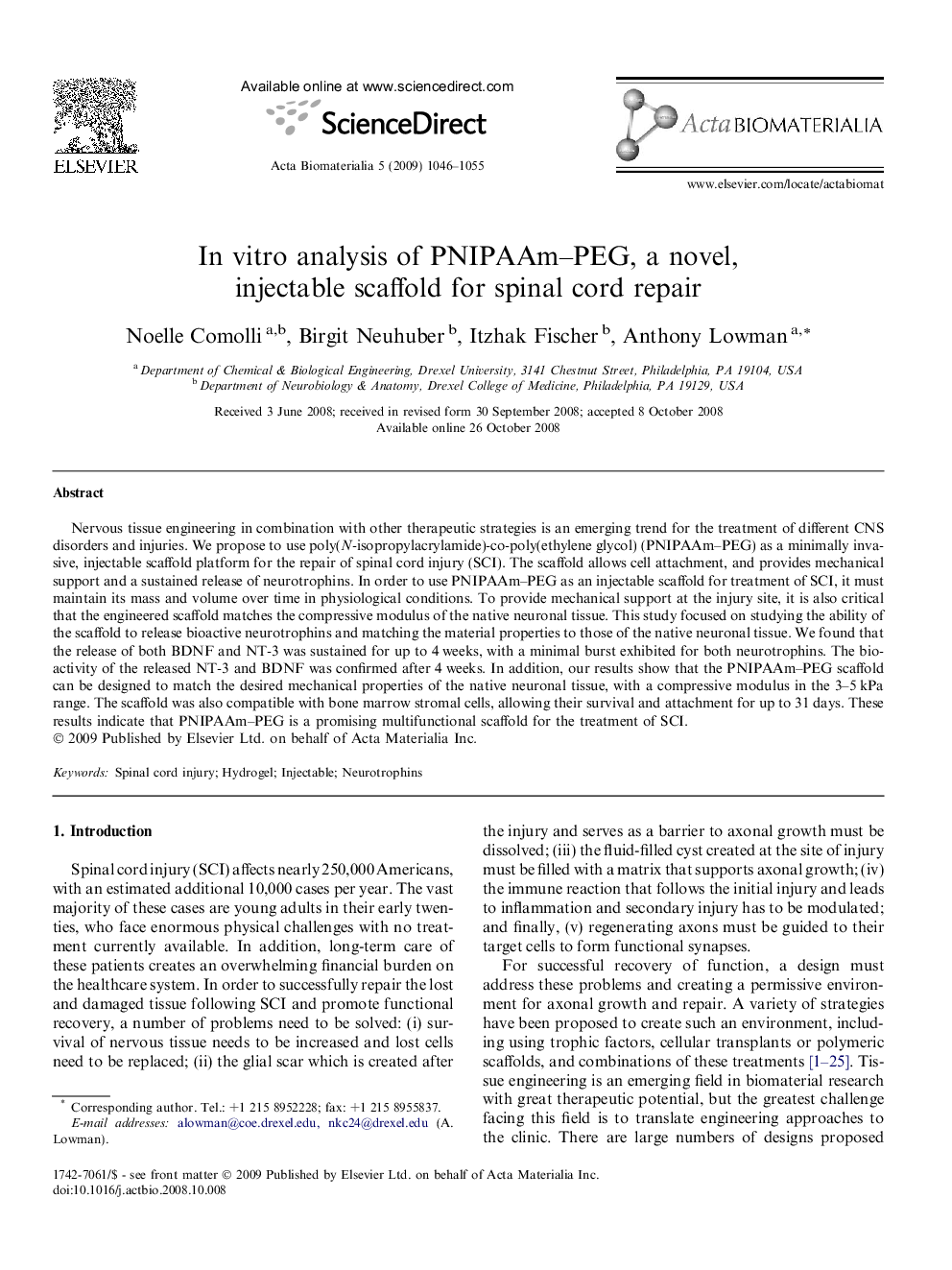| کد مقاله | کد نشریه | سال انتشار | مقاله انگلیسی | نسخه تمام متن |
|---|---|---|---|---|
| 1507 | 85 | 2009 | 10 صفحه PDF | دانلود رایگان |

Nervous tissue engineering in combination with other therapeutic strategies is an emerging trend for the treatment of different CNS disorders and injuries. We propose to use poly(N-isopropylacrylamide)-co-poly(ethylene glycol) (PNIPAAm–PEG) as a minimally invasive, injectable scaffold platform for the repair of spinal cord injury (SCI). The scaffold allows cell attachment, and provides mechanical support and a sustained release of neurotrophins. In order to use PNIPAAm–PEG as an injectable scaffold for treatment of SCI, it must maintain its mass and volume over time in physiological conditions. To provide mechanical support at the injury site, it is also critical that the engineered scaffold matches the compressive modulus of the native neuronal tissue. This study focused on studying the ability of the scaffold to release bioactive neurotrophins and matching the material properties to those of the native neuronal tissue. We found that the release of both BDNF and NT-3 was sustained for up to 4 weeks, with a minimal burst exhibited for both neurotrophins. The bioactivity of the released NT-3 and BDNF was confirmed after 4 weeks. In addition, our results show that the PNIPAAm–PEG scaffold can be designed to match the desired mechanical properties of the native neuronal tissue, with a compressive modulus in the 3–5 kPa range. The scaffold was also compatible with bone marrow stromal cells, allowing their survival and attachment for up to 31 days. These results indicate that PNIPAAm–PEG is a promising multifunctional scaffold for the treatment of SCI.
Journal: Acta Biomaterialia - Volume 5, Issue 4, May 2009, Pages 1046–1055